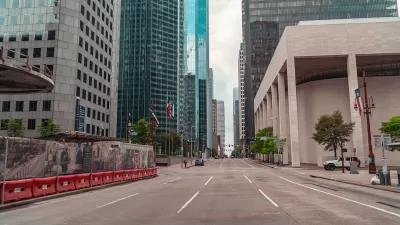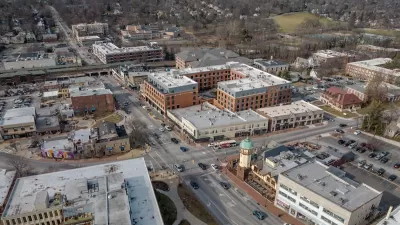An emerging field of ‘neuroarchitectural’ research is revealing how building facades and urban design impact the human brain and body.

The impact of urban design and architecture on the human psyche has been discussed by writers for decades, and, according to a piece by Thomas Heatherwick in Wired, planners and architects are starting to take note.
From the second half of the 20th century, pioneering thinkers such as American author and activist Jane Jacobs and Danish architect Jan Gehl began highlighting the inhuman way our cities were being shaped, with boring constructions, barren spaces and brutal expressways.
According to Heatherwick, planners and builders were long inconvenienced by the truths told by activists such as Jane Jacobs and Jan Gehl. “But the recent availability of sophisticated new brain-mapping and behavioral study techniques, such as using wearable devices that measure our body’s response to our surroundings, means it is getting much harder for the construction industry echo chamber to keep ignoring the responses of millions of people to the places it has created.”
Heatherwick explains how the study of “neuroarchitecture” has been growing around the world, with researchers understanding more about how the built environment affects how humans feel when navigating and existing in it. “Very soon, I believe, property developers may have to treat neuroscientific findings as key information to be weighed up alongside structural-load calculations, energy efficiency, lighting, and acoustics. And the person in the street will welcome this change.”
FULL STORY: It's Official: Boring Cities Are Bad for Your Health

Study: Maui’s Plan to Convert Vacation Rentals to Long-Term Housing Could Cause Nearly $1 Billion Economic Loss
The plan would reduce visitor accommodation by 25,% resulting in 1,900 jobs lost.

Alabama: Trump Terminates Settlements for Black Communities Harmed By Raw Sewage
Trump deemed the landmark civil rights agreement “illegal DEI and environmental justice policy.”

Why Should We Subsidize Public Transportation?
Many public transit agencies face financial stress due to rising costs, declining fare revenue, and declining subsidies. Transit advocates must provide a strong business case for increasing public transit funding.

Paris Bike Boom Leads to Steep Drop in Air Pollution
The French city’s air quality has improved dramatically in the past 20 years, coinciding with a growth in cycling.

Why Housing Costs More to Build in California Than in Texas
Hard costs like labor and materials combined with ‘soft’ costs such as permitting make building in the San Francisco Bay Area almost three times as costly as in Texas cities.

San Diego County Sees a Rise in Urban Coyotes
San Diego County experiences a rise in urban coyotes, as sightings become prevalent throughout its urban neighbourhoods and surrounding areas.
Urban Design for Planners 1: Software Tools
This six-course series explores essential urban design concepts using open source software and equips planners with the tools they need to participate fully in the urban design process.
Planning for Universal Design
Learn the tools for implementing Universal Design in planning regulations.
Smith Gee Studio
Alamo Area Metropolitan Planning Organization
City of Santa Clarita
Institute for Housing and Urban Development Studies (IHS)
City of Grandview
Harvard GSD Executive Education
Toledo-Lucas County Plan Commissions
Salt Lake City
NYU Wagner Graduate School of Public Service





























